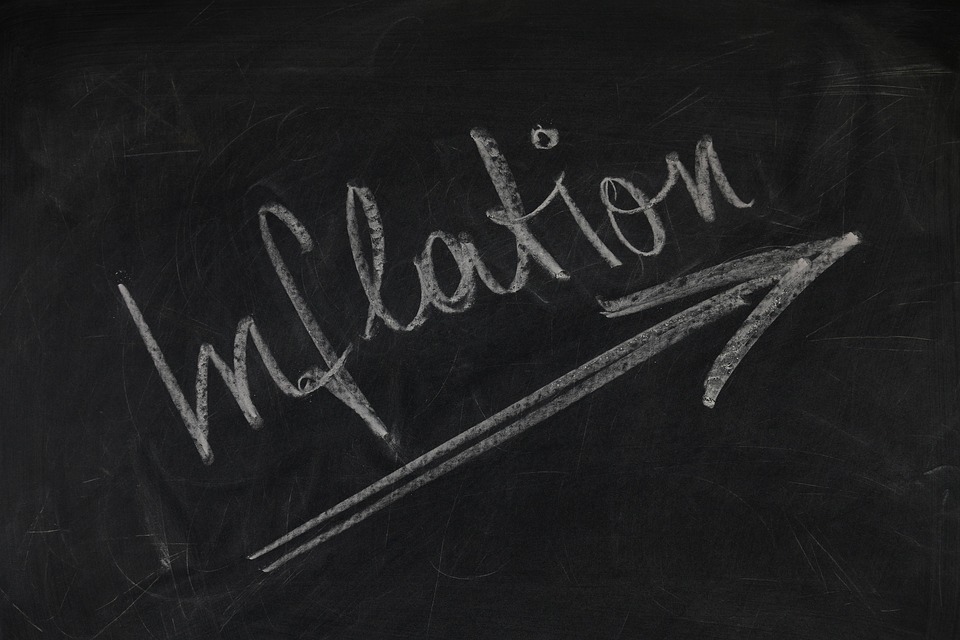A Calm Before Fresh Inflation Agitation?

If the Federal Reserve’s Beige Book for May, 2025 is indicative, then the soft CPI (Consumer Price Index) report for May looks like a calm before the next inflation agitation. In the prices summary of the Beige Book, the Fed noted signs of higher prices to come (emphasis mine): “There were widespread reports of contacts expecting costs and prices to rise at a faster rate going forward. A few Districts described these expected cost increases as strong, significant, or substantial. All District reports indicated that higher tariff rates were putting upward pressure on costs and prices….Contacts that plan to pass along tariff-related costs expect to do so within three months.”
While it is far from clear how tariff-driven price hikes will eventually shake out, the Fed districts offered sufficient evidence of businesses who have price hikes waiting in the wings.
In Boston, a clothing retailer retagged products for sale this summer with higher prices than planned before tariffs.
In New York, manufacturers claimed they plan to pass along most or all of tariff-driven price increases. Moreover, “businesses continued to expect substantial increases in input prices in the months ahead.”
In Philadelphia, “more than two-thirds of the surveyed firms anticipated increased costs and expected their competitors to increase prices in as little as two months.” Yet, about half of Philadelphia respondents reported increased price sensitivity amongst its customers.
In Cleveland, businesses expect a “strong pace” of growth in costs”, particularly with nonlabor input costs rising “at a robust pace in recent weeks.”
Firms in Richmond expect prices to rise faster in the coming 6 months.
In Atlanta, some firms pushed through price increases despite softening demand, a troubling prospect of potential stagflation. Most interesting are the firms using “a multi-pronged approach to managing tariffs, including pushing costs back to suppliers, reconfiguring supply chains, absorbing costs in margins, and passing costs through to customers.”
In Chicago, businesses expect higher inflation over the next 12 months.
In St. Louis, “most contacts expecting nonlabor costs to increase next quarter reported that they would pass along the costs to customers within three months”.
In Minneapolis, more than half of surveyed business claimed they plan to increase prices in the coming future.
Kansas City businesses “generally [anticipate] higher input and output prices in the coming months.” Cost increases from the surge in demand for shipping products ahead of tariffs will be passed on to customers in the next 12 months.
Oilfield services firms in Dallas are having trouble passing along higher costs to customers. Of the Texas businesses who feel able to pass along tariff-related costs, “about 60 percent are doing so within a month of the tariff taking effect, and 90 percent are doing so within three months.”
San Francisco did not provide anecdotes or data on planned price hikes. However, one alarming anecdote came from a business which noted that tariff-related price hikes were not rolled back along with the related rescinded tariff. This inflation “stickiness” is a worrying indicator of how tariff-driven price hikes can cause lasting, cascading price pressures in the economy.
Given these consistent and confirming anecdotes and data points, the CPI looks set to bottom out in coming months if not in the very next report. With Beige Book in hand, the Fed is unlikely to cut rates ahead of more certainty on tariff policy. These reports from the Federal Reserve’s districts underline Jerome Powell’s core desire to see the economic warfare, primarily through tariffs, come to an end.
The Downtrending CPI Is Also Colliding With A Weakening U.S. Dollar
While May’s CPI came in softer than “expected”, its descent still slowed since March’s big drop. The reports from the Beige book suggest that this downtrend could continue if not for tariff-driven price pressures. Instead, fresh inflation agitation likely awaits.
(Click on image to enlarge)

Source: U.S. Bureau of Economic Analysis, Personal Consumption Expenditures Excluding Food and Energy (Chain-Type Price Index) [PCEPILFE], retrieved from FRED, Federal Reserve Bank of St. Louis; U.S. Bureau of Labor Statistics, Consumer Price Index for All Urban Consumers: All Items Less Food and Energy in U.S. City Average [CPILFESL], retrieved from FRED, Federal Reserve Bank of St. Louis. June 12, 2025.
In the meantime, the U.S. dollar continues to weaken. At the time of writing, the U.S. dollar index (DXY0) briefly broke down below its 3-year low set back in April. A weaker dollar means imported goods become more expensive, all else being equal. Thus, the weaker currency will translate into higher inflation in the U.S. except to the extent demand for imported goods falls along with the dollar.
(Click on image to enlarge)

Source: TradingView
Be careful out there!
More By This Author:
Inflation At Target And GDP Growth Recovery: A Comeback Case For The Australian Dollar
Powell’s (Not So) Hidden Plea To End The U.S.’s Tariff War
An Early Look At Stagflationary Pressures



